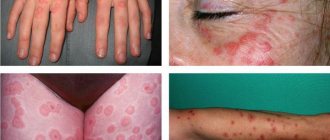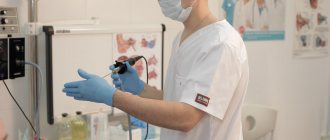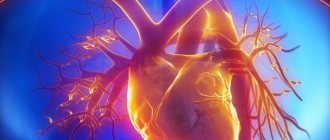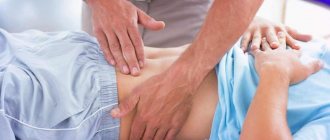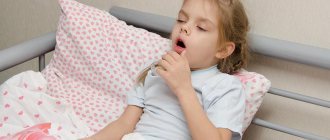Erythema nodosum (ICD-10 code: L52) is a fairly common disease that most often affects pregnant women. This pathology is characterized by the formation of medium-sized nodules with a diameter of one to three centimeters in the thighs, on the front surface of the legs and on the buttocks. As a rule, the appearance of these nodules is symmetrical - they appear on both the right and left legs. When pressing on the nodules, the patient experiences pain. There is thinning, thickening, and shine of the skin above them.
Erythema nodosum occurs not only in pregnant women, but also in people using hormonal contraception or suffering from tuberculosis and diseases caused by the introduction of streptococcal flora.
General information
Erythema nodosum is a disease in which there is damage to the skin and subcutaneous vessels of an inflammatory nature.
This disease is of an allergic nature. During its development, the patient develops dense hemispherical painful nodes. They can vary in size and most often appear symmetrically on the lower extremities. The term “erythema nodosum” was first introduced by British dermatologist Robert Willan in 1807. Later studies made it possible to conclude that erythema nodosum is one of the variants of allergic vasculitis . If we compare the symptoms of the disease with systemic vasculitis , then with erythema nodosum there is local vascular damage, which mainly appears on the legs.
The disease can occur in patients at any age, but most often the disease affects people in the age group of 20 to 30 years. If before puberty erythema nodosum is equally common among both sexes, then after this period erythema nodosum occurs 3-6 times more often in women. The number of cases of the disease increases in winter and spring.
Types of erythema
In order for the treatment of erythema to be as effective as possible, the type of erythema must be determined during the diagnostic process. There are several different types of this disease. Toxic erythema appears in newborns and is a physiological norm. The child develops skin rashes. No other symptoms are observed. This is a natural manifestation that disappears on its own about a week after its appearance.
Erythema infectiosum occurs in a person suffering from acute infectious diseases of unknown etiology. It appears in both adults and children.
Exudative erythema multiforme , as a rule, develops with colds. Characteristic symptoms of the disease are severe headache, general malaise and weakness, pain in the joints and throat, rashes that mainly appear on the skin of the hands and feet, as well as on the palms, legs, genitals, and oral mucosa. Pronounced rashes can be distinguished even in the photo. These are reddish spots with clear boundaries, which sometimes become vesicles with serous contents, which open on their own, leaving bleeding erosions. If the disease is not treated, death can occur.
Erythema migrans is a characteristic symptom of Lyme disease , which is transmitted by a tick bite. A ring-shaped erythema appears around the place where the tick has attached itself, which increases very quickly and at the same time turns pale in the center.
Ring-shaped erythema is a chronic disease. The reasons for its manifestation are poisoning of the body, infectious diseases, and allergic reactions. It is characterized by the appearance of spots that have a rounded shape. These spots merge into rings. More often the disease develops in young men.
There are also other types of erythema that appear in certain pathologies and diseases.
Non-infectious manifestations
In accordance with the causes that caused them, erythema of non-infectious etiology is divided into:
- infrared - provoked by infrared radiation, the power of which was not enough for a full burn, and manifested in the form of a reddish vascular network;
- X-ray – caused by exposure to X-rays or high-frequency electromagnetic waves;
- symptomatic - appearing after contact with an allergenic agent in the form of hyperemic convex spots of irregular shape;
- idiopathic - formed under the influence of heredity as an increase in the diameter of capillaries at the junction with the vascular network, with redness of the palmar surfaces;
- cold - formed when the skin is exposed to low temperatures, manifesting itself in the form of a bluish-reddish rash with local swelling and itching;
- ultraviolet - appearing as a result of exposure to ultraviolet radiation on the skin.
In most cases, when the action of the provoking factor ceases, the redness disappears after some time. In some cases, symptomatic help is required.
Causes of erythema nodosum
Erythema nodosum develops in the human body due to the manifestation of infectious processes. First of all, we are talking about streptococcal infections . Consequently, the disease develops with tonsillitis , scarlet fever , pharyngitis , otitis media and other diseases. Symptoms of erythema nodosum also appear in patients with tuberculosis . Less commonly, the disease develops with yersiniosis , trichophytosis , coccidioidomycosis , and inguinal lymphogranulomatosis . In addition, the cause of the disease can be drug sensitization due to the intake of sulfonamides , salicylates , iodides , bromides , antibiotics , as well as as a result of vaccination .
Often acute erythema nodosum in children and adults occurs with sarcoidosis . Non-infectious reasons for which the disease develops are Behçet's disease , inflammatory bowel diseases , ulcerative colitis , and cancer . But in these cases, symptoms of the disease appear less frequently. Erythema nodosum can also occur during pregnancy , if there are foci of chronic infection in the body. Sometimes erythema nodosum is diagnosed in several members of the family, that is, we can talk about a hereditary tendency to erythema nodosum. People who have vascular disorders and a tendency to allergic diseases are prone to a chronic course of the disease.
It is very important that the disease is diagnosed in a timely and efficient manner. When determining how to treat erythema nodosum, the doctor must find out what exactly was its root cause. But in any case, treatment of erythema nodosum is always carried out only under the supervision of a specialist.
Medicines
Photo: sdtreatmentcenter.com
Antibacterial drugs are prescribed exclusively by a doctor, taking into account the type of infection, since each group of antibiotics is capable of having a therapeutic effect on a specific microflora. Antibiotics should be taken as prescribed by the doctor. You should not discontinue the drug or change the dosage on your own, as these actions increase the risk of the infectious process transitioning from the acute to the chronic stage. It is also important to note that antibacterial drugs destroy not only pathogenic microorganisms, but also the normal microflora inhabiting the intestinal tract. As a result, dysbiosis occurs (a condition in which the composition of microorganisms inhabiting the intestines changes (there are fewer beneficial bacteria), which leads to disruption of the gastrointestinal tract). To prevent this, Linex is prescribed. One capsule of this product contains a sufficient amount of live lyophilized lactic acid bacteria that can normalize the intestinal microflora. It is well tolerated, no side effects are noted, but there is a possibility of individual intolerance in some people.
To suppress inflammation, nonsteroidal anti-inflammatory drugs (ibuprofen, diclofenac) are used, which also have an analgesic effect. For severe pain, drugs with a more significant analgesic effect (meloxicam, nimesulide) are prescribed. People with diseases of the gastrointestinal tract, especially peptic ulcers, should treat these drugs with caution, since non-steroidal anti-inflammatory drugs can lead to complications when taken for a long time. Therefore, it is recommended to take drugs such as omeprazole, pantoprazole, lansoprazole. Their action is aimed at reducing acidity in the stomach, which leads to an increase in gastrin levels in proportion to the decrease in acidity. Thanks to this group of drugs, the damaging effect on the gastric mucosa is reduced.
To strengthen the walls of blood vessels affected by the disease, drugs such as trental, vitamin E, and nicotinic acid (vitamin PP) are used.
It is recommended to apply dimexide with diclofenac in gel form, mixed in equal proportions, to the area of the affected joints. After applying the gel, apply a bandage and leave for a couple of hours. Dimexide has an anti-inflammatory effect, and diclofenac adds an analgesic effect.
Corticosteroid ointments are applied to the affected areas of the skin. They have anti-inflammatory and desensitizing effects, which accelerates the process of resolution of erythema. Many people are afraid to deal with glucocorticosteroids, since their use is accompanied by various side effects. But it is worth noting that drugs for local action do not have a systemic effect on the human body.
Symptoms
The main manifestation of this disease is the presence of dense nodes, which are located in the lower parts of the dermis or in the subcutaneous tissue. Such nodes can have different diameters: it varies from 5 mm to 5 cm. The skin above the nodes is red and smooth. The nodes rise slightly above the general skin, but no clear boundaries are observed, since the tissue around them swells. Such nodes grow very quickly, but once they reach a certain size, they stop growing.
People with erythema nodosum experience different types of pain. It can manifest itself both during palpation and from time to time occur spontaneously. There is no itching in the affected areas.
After about 3-5 days, the nodes resolve. They compact and do not fall apart. A characteristic symptom is a change in skin color in the areas above the nodes. This process is similar to how a bruise . At first the skin becomes brownish, and then turns blue, and gradually turns yellow.
Most often, nodes with erythema nodosum appear on the anterior surface of the legs. In most cases, the lesion is symmetrical, but sometimes unilateral or single rashes are observed. In all places of the body where subcutaneous fatty tissue is located, elements of erythema nodosum may appear. They appear on the calves, thighs, buttocks, face, and sometimes on the episclera of the eyeball.
Most often, erythema nodosum begins acutely. The person experiences fever, chills, weakness, and lack of appetite.
Most patients with erythema nodosum experience arthropathy : joint pain, morning stiffness, pain when palpating. About a third of patients experience symptoms of inflammation in the joint ( arthritis ). The skin in the joint area turns red and swells, and intra-articular effusion is observed. In the presence of articular syndrome in patients with erythema nodosum, large joints are affected symmetrically. Small joints of the hands and feet may swell. General symptoms and arthropathy sometimes appear several days earlier than the elements on the skin.
Depending on the severity of the disease, the nodes completely resolve within two to three weeks. At the place where they were located, hyperpigmentation and peeling of the skin . When the skin manifestations disappear, the articular syndrome also disappears. The acute period of the disease lasts for about one month.
A chronic course of the disease with periodic relapses is observed in more rare cases. During exacerbations, a small number of nodes appear. As a rule, the nodes are single, they are dense, bluish-pink and can persist for several months. Sometimes manifestations on the skin are accompanied by chronic arthropathy, but the joints are not deformed.
Treatment
Photo: healthafter50.com
Treatment begins with eliminating the source of infection that contributed to the development of erythema nodosum. For this purpose, antibacterial drugs are prescribed, the action of which is aimed at destroying pathogenic microorganisms. To find out which antibiotic is suitable in a given situation, an analysis is carried out for the sensitivity of pathogenic flora in relation to various groups of antibiotics. Before the results of the study arrive, antibacterial agents are prescribed empirically, after which their effectiveness is assessed in each specific case.
In order to suppress the inflammatory process, anti-inflammatory drugs are prescribed, and painkillers are also used. In addition, ointments can be used for topical application. Corticosteroid ointments have a good effect, which accelerate the resolution of skin manifestations. For inflammation of the joints, anti-inflammatory ointments are used topically.
To improve the effect, physiotherapy is prescribed:
- magnetic therapy;
- laser therapy;
- phonophoresis with hydrocortisone on the area of erythema or affected joints.
Diagnostics
During the diagnostic process, the doctor initially examines the patient. Laboratory tests are required. However, it should be noted that changes in the data of such studies are non-specific. But still, with their help, it is possible to differentiate the disease, as well as determine the cause and concomitant disease. The result of a clinical blood test in the acute form of erythema nodosum or in case of relapse of a chronic disease indicates an increased ESR and neutrophilic leukocytosis . To determine the presence of streptococcal infection in the body, a bacterial culture is performed from the nasopharynx. If the doctor suspects yersiniosis, the doctor will prescribe a stool culture. To exclude tuberculosis, tuberculin diagnostics is performed. If the patient complains of severe articular syndrome, consultation with a rheumatologist and subsequent blood testing for rheumatoid factor is necessary.
If there are difficulties in confirming the diagnosis, it is possible to perform a biopsy of one of the nodes. During histological examination, an inflammatory process can be detected.
To determine the origin of the disease, the presence of vascular disorders, foci of chronic infection, the patient needs to consult with an infectious disease specialist, pulmonologist, otolaryngologist and other specialists. Also, if necessary, during the diagnostic process, rhinoscopy , pharyngoscopy , radiography and CT of the lungs , examination of the veins , rheovasography of the lower extremities , etc. are performed.
A lung examination can detect tuberculosis , sarcoidosis , or other pathological processes in the lungs.
Prices for services
| Services | Price |
| Appointment (examination, consultation) with a dermatologist of the highest category/K.M.N. primary | 1200 |
| Appointment (examination, consultation) with a dermatologist of the highest category/PhD. repeated | 1000 |
| Taking a scraping | 250 |
| Prescription of individual complex treatment (without the cost of drugs) | 1000 |
| Piercing earlobes with a gun | 800 |
| Piercing the earlobes (cartilage, tragus) with a needle | 1000 |
| Belly button piercing | 1500 |
| Lip piercing | 1000 |
| Eyebrow (or tongue) piercing | 1500 |
| Nipple piercing | 2000 |
| Nose piercing | 2000 |
| Sterile jewelry earrings | 300 |
| Instrumental diagnostics for mushrooms (VOODOO lamp) | 300 |
| Dermatoscopy | 200 |
